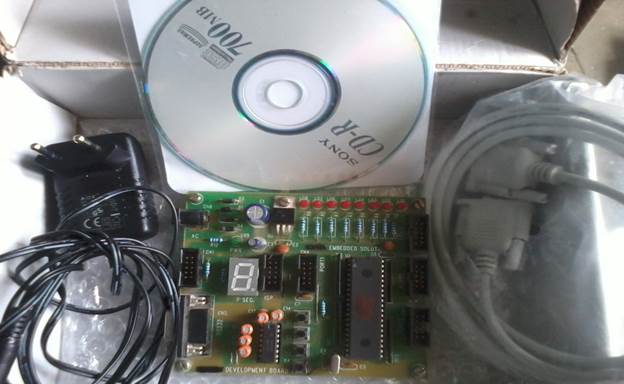Follow Us : Like, Share, Comment, Subscribe, Join – Social Media & Thanks For Watching
PIC16F877 SVSEMBEDDED SYSTEMS COURSE/HOBBY LEARNING/DEVELOPMENT KIT

Introduction to ‘C’:
- About ‘C’
- Number system and working examples.
- ‘C’ Data types/Operators/Precedence.
- Basic GCC commands.
- Refresh Basic ‘C’ Programming.
Learning ‘C’:
- ‘C’ coding style rules.
- Compilation steps.
- Object/Executable file format.
- Linkers/Loaders and functionalities.
- Process image and its sections.
- ‘C’ process environment on Linux.
- Bit-wise operator’s examples
- Preprocessor directives and examples.
- Arrays and Strings.
- Structures/Unions/Enumerations.
- Functions & Pointer.
- Dynamic memory allocation ( Malloc, Calloc, Free).
- Files and Files Operations.
- Standard I/O Library.
- Header Files.
- ‘C’ Program with multiple files.
- Storage classes.
- Const and volatile qualifiers.
===================================================
- Introduction to Embedded Systems.
- Architecture of Embedded System.
- Programming for Embedded System.
- The Process of Embedded System Development.
- Communication Interfaces.
- Embedded/Real-Time Operating Systems.
- Embedded Software Development on different Microcontrollers.
- Network Programming.
===================================================
Module-1
- Introduction to Microcontrollers.
- Microcontroller’s vs Microprocessors.
- Introduction to PIC16F877.
- PIC16F877 Architecture.
- Basic Registers and addressing modes.
- Special function Registers.
- Instruction set.
- Interrupts & Timers.
- Programming Microcontrollers in ‘C’
- Introduction to MPLAB {or} CCS.IDE Tools.
- Understanding Basic Devices.
- Light emitting Diodes [LED].
- Switches.
- Liquid Crystal Displays.
- Seven segment display.
- Matrix keypad.
- Replays.
- Buzzers.
- Dc Motors & PWM [Pulse Width Modulation].
- Stepper motors.
- Sensors and signals Conditioning
LAB WORKS:
- Building a user Interface
- Interfacing a light emitting diode.
- Interfacing Switches.
- Interrupts.
- Timers and counters.
- Interfacing a LCD Display.
- 8bit mode.
- 4bit mode.
- LCD Menus.
- Interfacing a 4x4 Matrix Keypad.
- Pulse Width Modulation.

Hardware Interfacing Basic Devices
- LED.
- Switches.
- LCD.
- 7-Segment display.
- Keypad.
- Relays.
- Buzzers.
- DC Motors.
- Stepper Motors.
Module-2
- Serial Communication.
- MAX-232.
- Asynchronous Communication.
- RS-232
- RS-485
- Synchronous Communication.
- SPI
- I2C
- EEPROM
- Real Time Clock
- Converters
- ADC
- DAC
- Infrared & Radio Frequency.
- Interfacing Microcontrollers.
LAB WORKS:
- RS 232.
- RS 485.
- Interfacing Microcontrollers to Microcontrollers.
- Interfacing Microcontrollers to Computer.
- SPI Protocol.
- EEPROM Using I2C
- ADC
- DAC
Module-3(learning of technologies)
- Interfacing different devices.
- WI-FI
- BLUETOOTH.
- GSM.
- GPS.
- RF-ID.
- FRINGER PRINT.
- RF.
- Xbee.
- GRAPHICAL LCD.
Module4: (learning of Protocols)
Embedded Protocol
- I2C.
- SPI.
- CAN.
- RS 232, RS 485.
Module5: (ACADEMIC PROJECTS ON DEVELOPEMNET KIT)
The above development board will guide u the 10 different technologies for the student. svsembedded will provide the CD in that
WE WILL PROVIDE
1. ABSTRACT
2.DATASHEETS
3.DOCUMENTATION
4.SCHEMATIC DIAGRAM.
5. SOFTWARE CODE
6.SAMPLE PPT
7.PHOTOS&VIDEO FILE ON ENTIRE PROJECT


